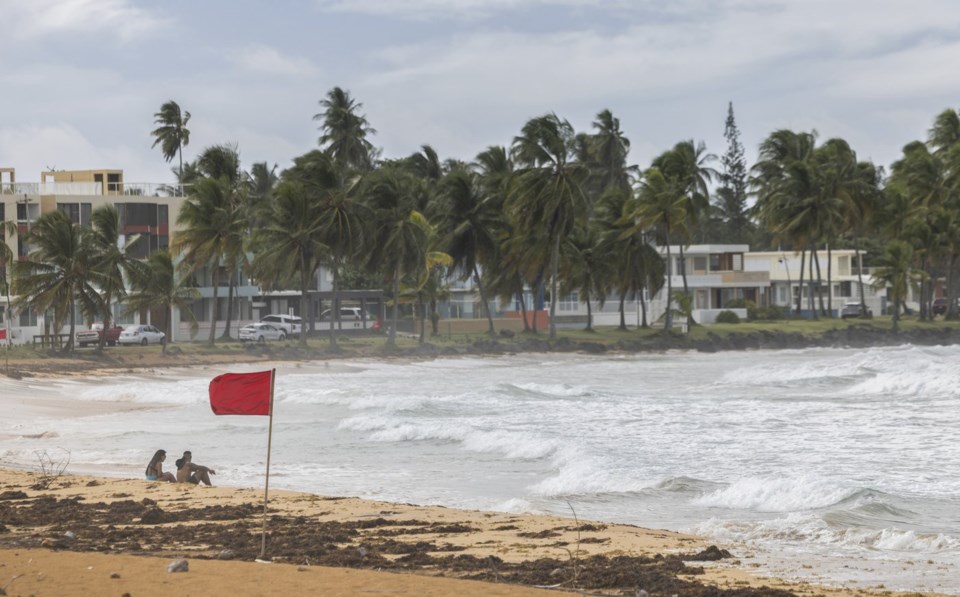HALIFAX — Hurricane Ernesto is expected to track "well south" of Nova Scotia by the time the storm approaches the Atlantic region on Monday, the Canadian Hurricane Centre says.
Still, Nova Scotia and southeastern Newfoundland may receive some rain that day, the agency said in its Thursday afternoon forecast. There is a low probability of winds in Nova Scotia and "a bit higher" chance of strong winds in Newfoundland, it added.
The Halifax-based agency said the storm is expected to hit Bermuda on Saturday as a Category 2 hurricane, generating powerful winds and large ocean swell. Those high seas will begin arriving along the Atlantic coast that day and grow through the weekend, the federal agency said.
Chris Fogarty, a meteorologist with the centre, said in an interview Thursday that with four days until the storm's arrival in Canadian waters, "there is rather large uncertainty still."
"What is certain though is there will be heavy surf along the Atlantic coast of Nova Scotia. The beaches will be active with heavy surf," he said, adding that beachgoers should be cautious about riptides and powerful waves.
The hurricane centre said it expects "the track of Ernesto's center will be well south of Nova Scotia as it travels northeastward then approaches southeastern Newfoundland later Monday."
"Since the storm circulation is likely to be quite broad with tropical air and downpours spreading well beyond its center, Nova Scotia and Newfoundland could see at least some rain either directly or indirectly on Monday."
Offshore oil facilities, it said, should "certainly pay attention to this storm."
Fogarty said the jet stream appears likely to "steer the storm in an offshore direction .... That's the way it looks at this stage."
"The jet stream governs the way these storms travel .... There's a higher likelihood of the storm staying offshore than coming onto the shore."
According to the United States National Oceanic and Atmospheric Administration, jet streams are "relatively narrow bands of strong wind in the upper levels of the atmosphere, typically occurring around 9,100 metres in elevation." Within jet streams, the winds blow from west to east, but the band often shifts north and south, following the boundaries between hot and cold air.
The Canadian Hurricane Centre said the warm ocean temperatures are playing a role in intensifying the storm near Bermuda.
However, Fogarty said that's less of an issue in the North Atlantic, as water temperatures near the coast of Nova Scotia are cooler than usual this year.
"But it's going to generate huge waves and that will be quite challenging, not just for the onshore regions (of Atlantic provinces) but also for the offshore sector," he said.
This report by The Canadian Press was first published Aug. 15, 2024.
Michael Tutton, The Canadian Press




